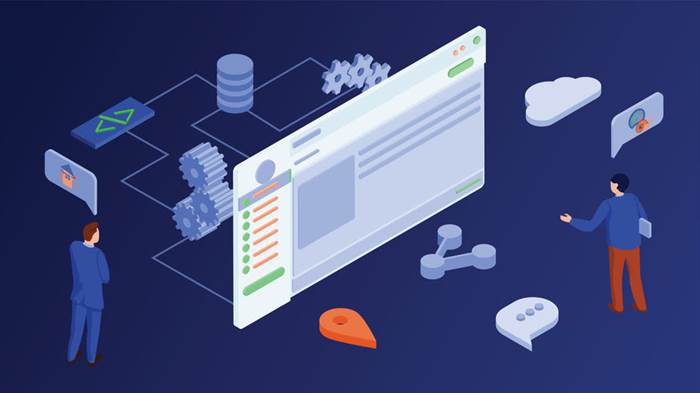Content
According to the changing user end environment or technology, the software is updated timely. Requirements Analysiswill identify and consider the risks related to how the technology will be integrated into the standard operating procedures. Although the origins of the iterative model stem from the software industry, many hardware and embedded software development efforts are now using iterative and incremental techniques . Unfortunately, despite the mission-critical nature of the software, it doesn’t capture as much attention as required from the C-suite. Software engineers rarely have a say at the table, and software strategies are mulled over and defined two or three layers down in the hierarchy.
The intent of a SDLC process it to help produce a product that is cost-efficient, effective, and of high quality. Refer to our comparison of continuous delivery, deployment, and integration for an in-depth breakdown of the unique roles these practice play in an SDLC. Adopting an SDLC strategy also lowers your team’s technical debt since developers take little to no shortcuts during software creation.
Artificial Intelligence and Information Technology
System performance is compared to performance objectives established during the planning phase. Implementation includes user notification, user training, installation of hardware, installation of software onto production computers, and integration of the system into daily work processes. This phase continues until the system is operating in production in accordance with the defined user requirements. The purpose of an SDLC methodology is to provide IT Project Managers with the tools to help ensure successful implementation of systems that satisfy University strategic and business objectives. The documentation provides a mechanism to ensure that executive leadership, functional managers and users sign-off on the requirements and implementation of the system.

Stakeholders then will examine the DDS based on the software’s risk assessment, design modularity and time constraints. The business analyst interacts with the business stakeholders and subject matter experts in order to understand their problems and needs. Harness is excited to announce The Code Rush, a new show that will help developers, programmers, and software architects learn how to improve their build, integration, test and deployment skills. NASA’s 1960s Project Mercury is an example of the early usage of the Iterative and Incremental Development model. The success of the project later led to further adoption as Project Mercury’s engineers took to other teams and projects. Since progress flows in one direction, there was little room to adjust to newly-discovered constraints, requirements, and problems once design decisions were made and implementation began.
Development Phase
Instead, the process turns upwards after the development phase and testers use the test plans created earlier to evaluate specific components of the product. The shift starting from the development phase allows forming a typical V-shape. It is one of the earliest models derived by software engineers but is rarely used today.
- The focus has shifted from ‘alienating’ to ‘collaborating’ IT processes with business objectives in order to stay innovative and competitive.
- According to Taylor , „the project life cycle encompasses all the activities of the project, while the systems development life cycle focuses on realizing the product requirements“.
- These drawbacks lead to modified waterfall models, such as the Sashimi , Waterfall with Subprojects, and Waterfall with Risk Reduction.
- Can turn out to be very expensive if requirements are misunderstood.
- During this step, current priorities that would be affected and how they should be handled are considered.
While the technologies, methods, and perspectives about building high-performance and scalable software services have changed, the responsibilities and actions have not. The Software Development Life Cycle is a series of important phases defined for teams producing and delivering high-quality software. This blog post will discuss the SDLC and its stages requirement phase in greater detail. Software development is an iterative process that involves designing, coding, testing, and deploying a software application or system. This process takes several different system development lifecycle phases, which are described below. In this phase, the database admin creates and imports the necessary data into the database.
Stage 3: Design and Prototyping
Testing is the last phase of the software development life cycle before the software is delivered to customers. During testing, experienced testers start to test the system against the requirements. Depending on which software development methodology is used, different approaches are taken in moving from one phase to another. For example, in the waterfall or V model, the requirement analysis phase are saved in a SRS document and needs to be finalized before the next phase can take place.
Companies define custom SDLCs to create a predictable, iterative framework that guides the team through all major stages of development. The traditional SDLC follows a rigid process models with high emphasis on requirement analysis and gathering before the coding starts. It puts pressure on the customer to sign off the requirements before the project starts and the customer doesn’t get the feel of the product as there is no working build available for a long time. Agile uses an adaptive approach where there is no detailed planning and there is clarity on future tasks only in respect of what features need to be developed. There is feature driven development and the team adapts to the changing product requirements dynamically. The product is tested very frequently, through the release iterations, minimizing the risk of any major failures in future.
Stage 3: Designing the Product Architecture
At each iteration, design modifications are made and new functional capabilities are added. The basic idea behind this method is to develop a system through repeated cycles and in smaller portions at a time . Requirement Gathering and analysis − All possible requirements of the system to be developed are captured in this phase and documented in a requirement specification document. SDLC is a framework defining tasks performed at each step in the software development process.
The SDLC provides a structured approach to software development, ensuring that the final product meets the desired requirements, is of high quality, and is delivered on time and within budget. Software testing helps to improve the overall quality of the product and ensure that their product fulfills the end-users or the business needs. In this blog post, we will discuss the role of testing in the SDLC and explore the different stages that are commonly used to ensure the quality and reliability of software applications. Integration, system, security, and user acceptance testing is conducted during this phase as well. The user, with those responsible for quality assurance, validates that the functional requirements are met by the newly developed or modified system. This phase formally defines the detailed functional user requirements using high-level requirements identified in the Initiation and Feasibility Phases.
Software Development Life Cycle (SDLC)
In Agile, the tasks are divided to time boxes to deliver specific features for a release. The coding is performed based on the coding guidelines and https://globalcloudteam.com/ standards. The code goes through numerous code reviews and is optimized for best performance before the final build is checked into the repository.

